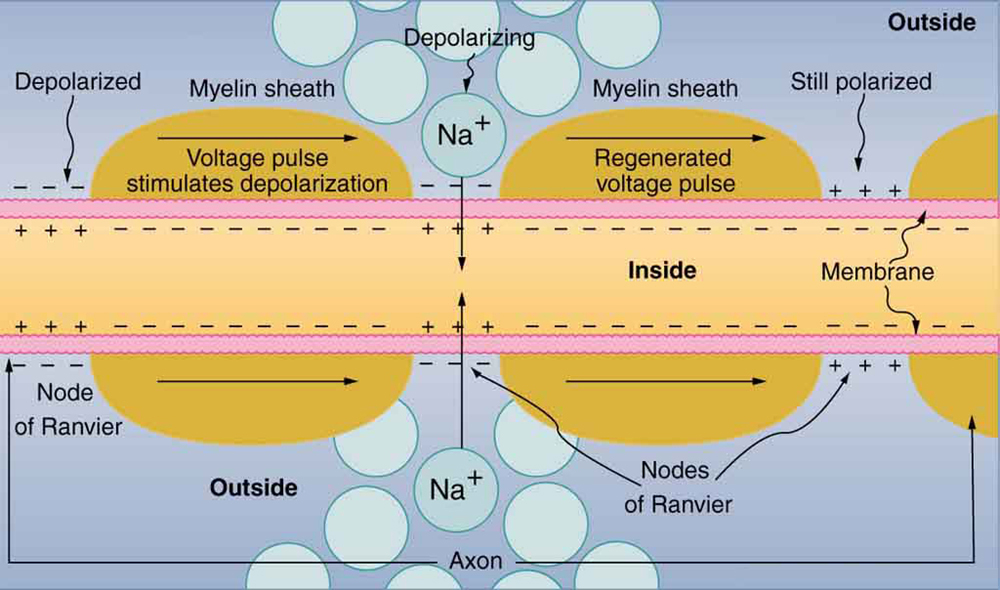How do action potentials travel along the axon?
1 Answer
An action potential is generated in 4 steps:
-
Depolarization to threshold.
-
Activation of sodium channels and rapid depolarization: the sodium ions rush into the cytoplasm and the inner membrane surface changes from negative to positive.
-
Inactivation of sodium channels and activation of potassium channels:
at +30 mV, inactivation gates of sodium channels close (sodium channel inactivation), and potassium channels open, beginning repolarization - Return to normal permeability:
The potassium channels begin to close when the membrane reaches normal resting potential (-70 mV) and when potassium channels finish closing, the membrane is hyperpolarized to -90 mV
The transmembrane potential then returns to resting level, and the action potential is over.
Action potentials move along an unmyelinated axon by continuous propagation , in which the moving action potential affects one segment of the axon at a time. A local current depolarizes the next segment to threshold, and the cycle repeats, propagating the action potential along the axon in 1 direction only, at a speed of about 1 meter/sec.
An action potential moves along a myelinated axon by saltatory propagation , which is faster and uses less energy.
In saltatory propagation, the local current produced by the action potential “jumps” from node of Ranvier to the next.
References from Hole's A&P



